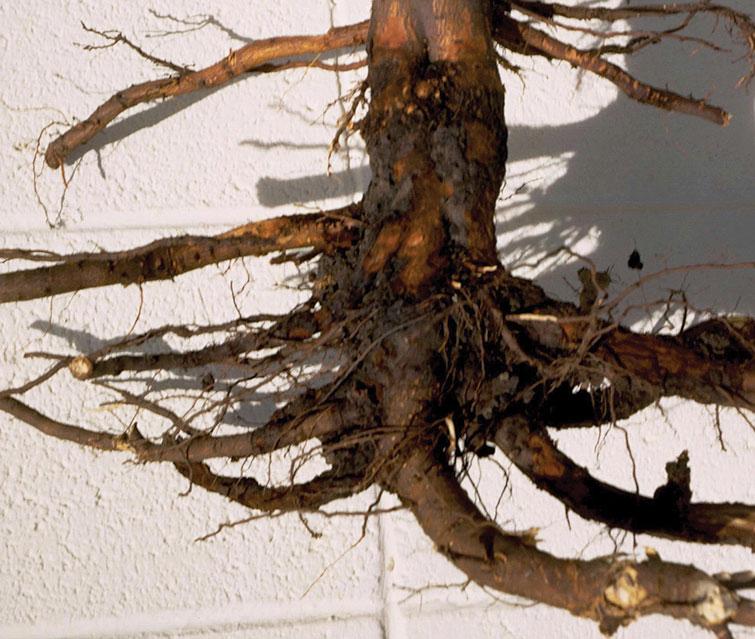Phytophthora
Phytophthora is a genus of plant-damaging oomycetes (water molds) that are similar to fungi. There are 59 species of Phytophthora, all of which cause disease in plants.
Phytophthora are natural and universally occurring soil organisms which attack roots in poorly drained or anaerobic soils. As infected roots discolor and decay, the result is wilt, canopy dieback, cankers on the trunk, general decline and death. Phytophthora species are host specific attacking many types of trees including ash, cherry, dogwood, fir, hemlock, oak, pear, pine, spruce; and shrubs, particularly rhododendron and azalea.
Common Symptoms
Leaves will appear drought-stressed, sometimes turning dull green, yellow, red, or purple as they wilt. Infected bark is water-soaked, with red-brown discoloration and has a disagreeable odor. Bleeding cankers form at the base of the trunk and eventually lead to death. Phytophthora root rot infection is often followed by beetle infestation and/or an alternate pathogen infection.
Treatments
We recommend the use of PHOSPHO-jet™, a systemic fungicide for treatment of Phytophthora, using two steps. First, a micro-injection of PHOSPHO-jet into susceptible host trees, followed by amending the soil around the tree with humates, as Phytophthora thrives in poorly drained and anaerobic soils.
When To Treat
Generally, the best seasons for injection are fall and spring, as uptake occurs when trees are transpiring. The environmental conditions that favor uptake are adequate soil moisture and relatively high humidity.
What To Expect After Treatment
Tree recovery will be dependent upon the severity of the Phytophthora infection at the time of trunk injection. PHOSPHO-jet acts as a fungicide and as an added benefit, stimulates new root growth. The addition of humates will create a soil environment that favors root growth over disease development.
References And Photo Credits
Main photo taken by William M. Brown Jr., Bugwood.org
Phytophthora infected Rhododendron by Missouri Botanical Garden
Bleeding Canker on beech taken by Travis Cleveland, University of Illinois






